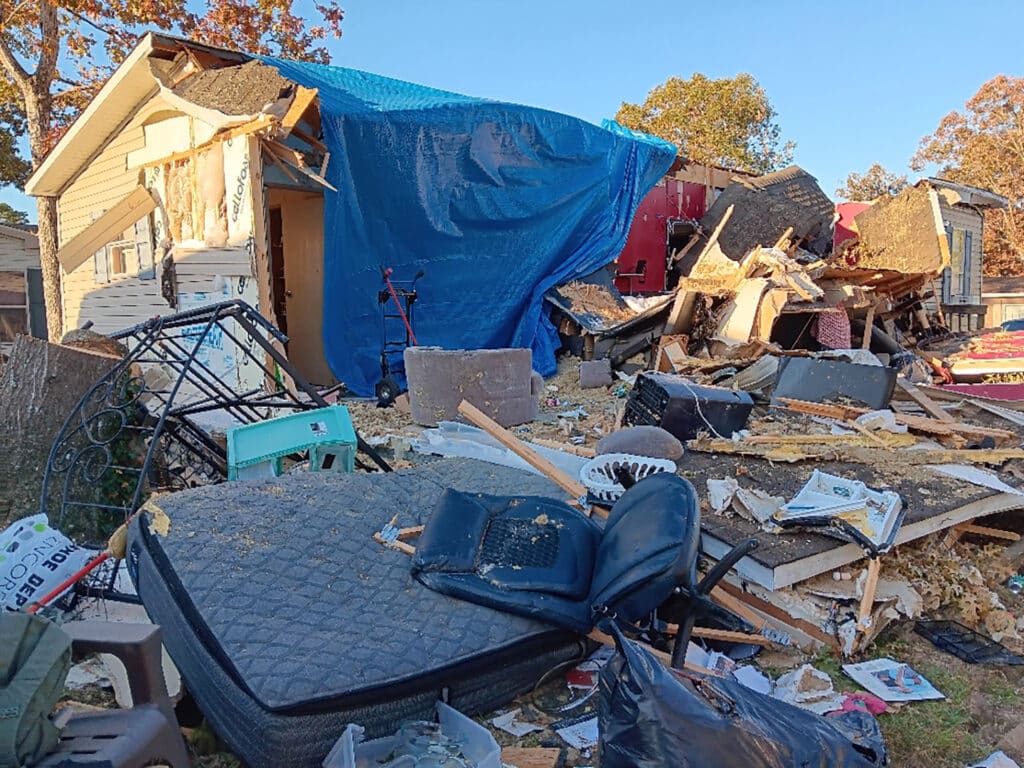Less than a month after the devastating 8.8-magnitude earthquake struck the coast of Chile, three STBC Disaster Relief teams had reached the country.
On March 10, the second DR team arrived. The team traveled to a small fishing village on the coast south of Conceptión that was devastated by a tsunami generated by the quake. Two waves hit the small town of Llico, washing away homes, businesses and roads.
Focused on food distribution, the four-man team went where food was needed most. They received a tip not to go to Conceptión, the scene of the most earthquake damage, because there was no one there to feed.
“We went to Llico because they had an outbreak of typhoid and hepatitis,” said team leader Bill Swanson. “The Health Department said it was due to improperly cooked food.”
The team purchased equipment in the town of Temuco, a seven-hour drive from Llico and hauled it back to the village. They set up their kitchen in a school-turned-military compound. From this base, they prepared the meals they would distribute.
“We cooked about 1,000 meals a day and loaded them up in the back of a couple of vehicles to take them to the people,” Swanson said.
Having lost their homes, the people clustered into about 20 camps set up on higher ground. The populations of these camps varied from as low as 30 people to hundreds. They were living out of whatever shelter they could piece together. Some had tents donated to them, but most were living in huts of their own making from whatever debris they could find.
“There might be some corrugated metal off of roofs that they had tied with twine and nailed to boards,” Swanson said. “You could see people going around picking up nails and straightening them out with a hammer so they could use them again. There were tarps hanging over wires. They were washing their clothes by hand and hanging them on clothes lines strung up around the camp. It was very crude living.”
One thing every camp had in common was the presence of the Chilean flag, which looks almost identical to the Texas flag. The only difference between the two is that in the Chilean flag, the red stripe stretches all the way across the bottom.
“They really liked our flag,” Swanson said. “The kids would point to the Texas flag on the sleeve of my shirt and then they would point to the Chilean flag that was sticking up on the pole. They kept saying, ‘similar, similar.'”
Each camp had an elected leader. The team would get permission from the leader of each camp before distributing food. After the food was prepared and loaded, the volunteers would travel with military escort to each of the camps. At the camp, they would set up a table for the inhabitants to get meals for their families. When each family had received their meals, the team would pack everything back into the cars and head to another camp.
Another part of the team’s strategy was teaching the local people to use the kitchen equipment so that they could continue to provide food for their families after the team had left. They would leave the equipment behind.
The team partnered with missionaries and local pastors who helped with the distribution and served the invaluable role of translators for the team. They were also trained on the do’s and don’t’s of food preparation and distribution.
“We wanted them to know how we do everything and why,” Swanson said. “You can’t do leftover meals. Anything left over has to be thrown away because there is no refrigeration. Anything that stays either above 40 degrees or below 140 degrees for more than four hours has to be tossed. They need to know how to keep everything sterile so we don’t give people botulism.”
The team stayed in Chile from March 10 through March 19. As they left, another team took their places to continue the feeding efforts. As Swanson’s team left, they saw new electrical wires going up. The Red Cross has also installed holding tanks to provide fresh water to the people. Swanson hopes that before long, the people will be able to provide themselves with enough food and water. The disaster relief priority at that point will be rebuilding.














